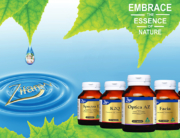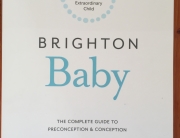 The common plastic additive bisphenol A has been getting a lot of attention lately. It’s a hormone disruptor that can be found in almost everybody, and animal studies have linked it to breast and prostate cancer, and infertility. In April of 2008, the National Toxicology Program raised concerns that exposure to BPA during pregnancy and childhood could impact the developing breast and prostate, hasten puberty, and affect behavior in American children. Knowing how you’re exposed is among the best ways to minimize further exposure.
The common plastic additive bisphenol A has been getting a lot of attention lately. It’s a hormone disruptor that can be found in almost everybody, and animal studies have linked it to breast and prostate cancer, and infertility. In April of 2008, the National Toxicology Program raised concerns that exposure to BPA during pregnancy and childhood could impact the developing breast and prostate, hasten puberty, and affect behavior in American children. Knowing how you’re exposed is among the best ways to minimize further exposure.
How’d it get there?
Studies show canned foods are a common source of daily BPA exposure in our lives. Cans of soda generally contain less BPA than canned pasta or soup. The worst foods tested contain enough BPA to put pregnant women and formula-fed infants much closer to dangerous levels than the government typically allows. Even some liquid infant formula is packed in cans lined with BPA, which seems ludicrous given the special vulnerabilities of children’s developing systems.
In addition to canned food, certain plastics are often made with BPA. Called polycarbonate, these plastics are rigid and clear or translucent and usually marked with a recycling label #7. Not all #7 containers are made with BPA, but it makes for a reasonable and useful guideline for avoiding a category of plastics. Some reusable polycarbonate water bottles (we won’t name names), marketed as non-leaching because they minimize plastic taste and odor, may still leach trace amounts of BPA. But hold on before you run out and buy a metal water bottle — make sure you know what you’re getting. Many reusable metal water bottles are lined with the same BPA-leaching plastic found in cans of food.
How do you get rid of it?
Unfortunately, BPA is so widely used and manufactured that you’re not likely to eliminate it from your system altogether. There are some steps you can take to minimize your exposure, though:
- When possible, and especially if you’re pregnant and when feeding a young child, limit the amount of canned food in your diet.
- Avoid using old or scratched polycarbonate bottles. If you’re in the market for a new water bottle, look for stainless steel water bottles that do not have a plastic liner.
- Don’t use plastic containers to heat food in the microwave. Opt for ceramic, glass, or other microwavable dishware.
- Soft or cloudy-colored plastic does not contain BPA.
- If you’re formula feeding your infant, consider using powdered formulas packaged in non-steel cans. Also, choose baby bottles made from glass or plastics that don’t leach BPA (like polypropylene or polyethylene).
Despite mounting evidence of severe health risks from two hormone-disrupting chemicals widely used in plastics, the U.S. government has been slow to regulate the substances.
Phthalates, used to soften plastic and make it flexible, are utilized in products ranging from medical devices (including tubing, catheters and intravenous bags) to car interiors and baby products like toys and teethers.
Bisphenol A, which makes plastic hard, translucent and shatter-resistant, is used in bottled water and baby bottles, food containers, dental products and the lining of food cans. Studies have implicated both as endocrine disruptors, or chemicals that mimic the body’s natural hormones, and lead to disruptive effects ranging from cancers to birth defects.
Because hormones operate at concentrations in the body as low as one part per billion, even small levels of such toxins can have serious effects.
In 2000, a study conducted by the Centers for Disease Control and Prevention discovered that 75 percent of people in the United States contain detectable levels of pthalates in their urine. Another study detected bisphenol A in the bodies of 95 percent of those tested.
The American Medical Association has urged the FDA to require that all medical products containing a certain type of phthalate to be labeled, so that exposure to infants can be limited. The agency has not acted, but more than 100 hospitals have started to remove such products from nurseries.
In 1996, Congress ordered the Environmental Protection Agency (EPA) to test pesticides for endocrine disrupting effects, but to date the agency has not tested a single chemical. The Congressional mandate does not even include chemicals found in plastics. Meanwhile, the EPA has asked the National Academy of Sciences to compile a report on phthalates to guide the agency in setting a safe maximum dosage requirement, which does not currently exist.
Even after this point, it would still be up to other agencies to impose regulations on the chemicals.The European Union banned three forms of phthalates from children’s items in 2005 and restricted three others. Canada has not used phthalates in children’s products since 1998, and California introduced a similar ban in October.












































































































































